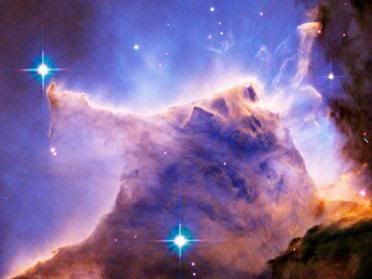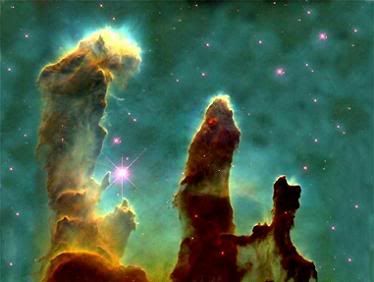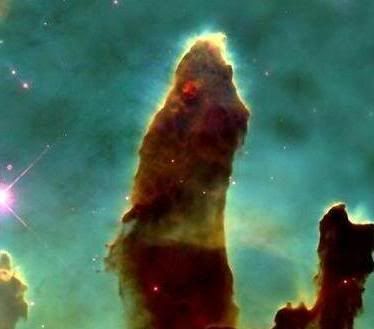|
|
Post by glactus on May 13, 2011 10:55:47 GMT
 The Eagle nebula The Eagle Nebula (catalogued as Messier 16 or M16, and as NGC 6611) is a young open cluster of stars in the constellation Serpens, discovered by Jean-Philippe de Cheseaux in 1745-46. Its name derives from its shape which is resemblant of an eagle. It is part of a diffuse emission nebula, or H II region, which is catalogued as IC 4703. This region of active current star formation is about 6,500 light-years distant. The tower of gas that can be seen coming off the nebula is approximately 100 trillion km (60 trillion miles) high. The brightest star in the nebula has an apparent magnitude of +8.24, easily visible with good binoculars  The Pillars of creation Within this system is the famous "Pillars of Creation" and this photograph is by the Hubble Space Telescope, which shows pillars of star-forming gas and dust within the nebula  Close up of a pillar This image of the pillar shows the star formation glow in more detail. Astronomers believe that over a few million years the Pillars of Creation will slowly dissolve and we will lose them as an optical gem.  Eagle nebula Credits: These are NASA/Hubble images Text by Wikipedia/Glactus |
|
|
|
Post by celestron on May 13, 2011 17:06:25 GMT
The Eagle is a great neb to image . I tried once before and didn't do very good but hopefully will get another chance this coming summer .
|
|